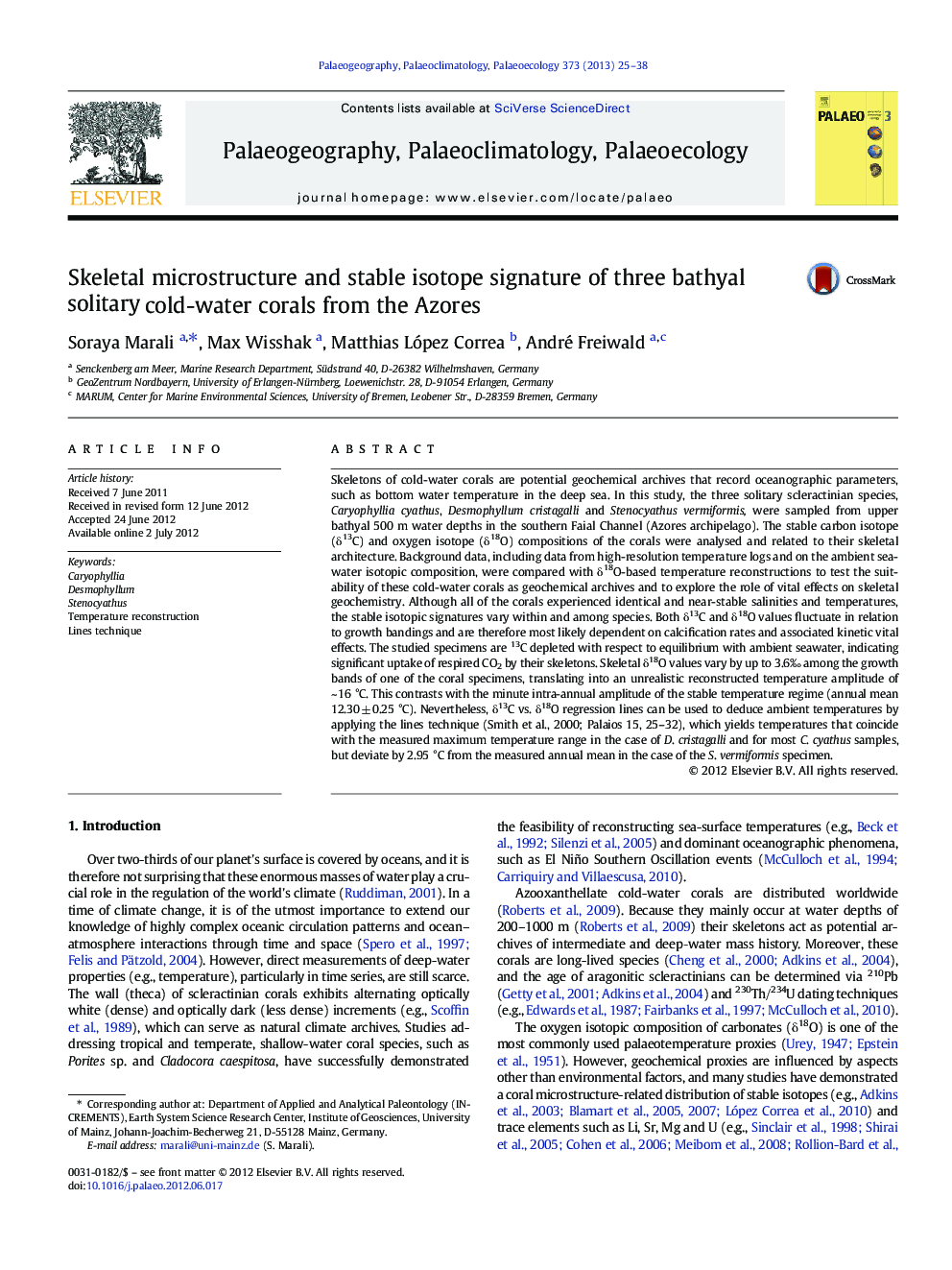| Article ID | Journal | Published Year | Pages | File Type |
|---|---|---|---|---|
| 4466582 | Palaeogeography, Palaeoclimatology, Palaeoecology | 2013 | 14 Pages |
Skeletons of cold-water corals are potential geochemical archives that record oceanographic parameters, such as bottom water temperature in the deep sea. In this study, the three solitary scleractinian species, Caryophyllia cyathus, Desmophyllum cristagalli and Stenocyathus vermiformis, were sampled from upper bathyal 500 m water depths in the southern Faial Channel (Azores archipelago). The stable carbon isotope (δ13C) and oxygen isotope (δ18O) compositions of the corals were analysed and related to their skeletal architecture. Background data, including data from high-resolution temperature logs and on the ambient seawater isotopic composition, were compared with δ18O-based temperature reconstructions to test the suitability of these cold-water corals as geochemical archives and to explore the role of vital effects on skeletal geochemistry. Although all of the corals experienced identical and near-stable salinities and temperatures, the stable isotopic signatures vary within and among species. Both δ13C and δ18O values fluctuate in relation to growth bandings and are therefore most likely dependent on calcification rates and associated kinetic vital effects. The studied specimens are 13C depleted with respect to equilibrium with ambient seawater, indicating significant uptake of respired CO2 by their skeletons. Skeletal δ18O values vary by up to 3.6‰ among the growth bands of one of the coral specimens, translating into an unrealistic reconstructed temperature amplitude of ~ 16 °C. This contrasts with the minute intra-annual amplitude of the stable temperature regime (annual mean 12.30 ± 0.25 °C). Nevertheless, δ13C vs. δ18O regression lines can be used to deduce ambient temperatures by applying the lines technique (Smith et al., 2000; Palaios 15, 25–32), which yields temperatures that coincide with the measured maximum temperature range in the case of D. cristagalli and for most C. cyathus samples, but deviate by 2.95 °C from the measured annual mean in the case of the S. vermiformis specimen.
► Septa of S. vermiformis have calcification centres with a positive etching relief. ► The examined corals incorporate significant amounts of respired CO2. ► Isotope data of outer surfaces yield relatively high reconstructed temperatures.► D. cristagalli specimens offer the best temperature estimates.
